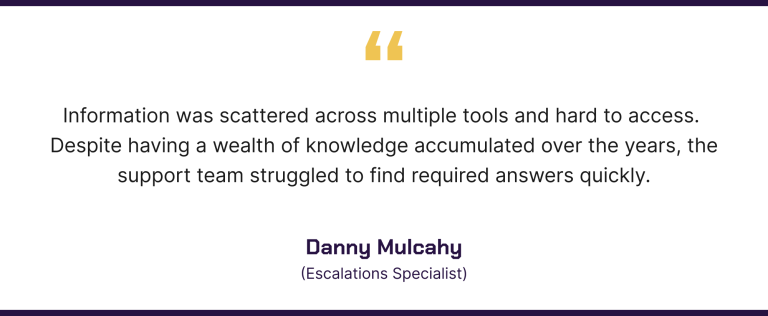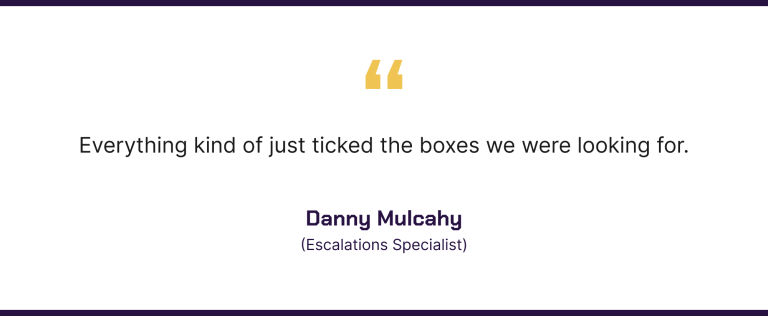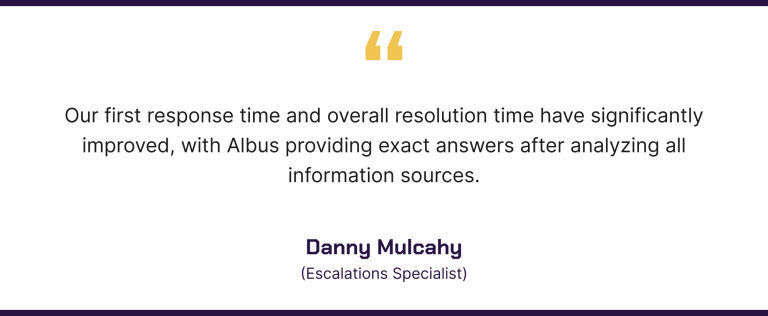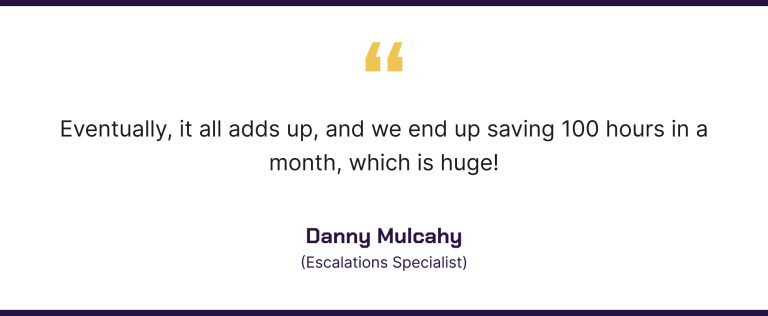Case Study: How Buffer Transformed Customer Support with Chat Aid
About Buffer:
Launched in 2010, Buffer is a social media scheduling and management platform with over 150,000 users.
Unlike their competitors, Buffer doesn't target enterprises but primarily helps small businesses and solo entrepreneurs streamline their social media activities. They assist with scheduling posts across platforms, analyzing performance, and engaging with audiences across multiple social platforms.
Buffer essentially works as a backend system for businesses to maintain an active social media presence without the need for a full marketing department.
Challenge:

"On average, we help over 4,500 customers monthly. That's a lot of people to keep happy!" grinned Danny Mulcahy, an Escalation Specialist at Buffer.
With 150,000+ users and an average of 300+ daily tickets, Buffer's support team was stretched thin. They were juggling multiple apps like Slack, Help Scout, Jira, and Notion to resolve customer queries.
Over time, their knowledge database grew exponentially. Eventually, the problem became twofold:
- The escalation team found it increasingly difficult to manage, update, and reference information
- The rest of the customer support team struggled to know where and how to find information
"There were times when someone asked a question, and among a team of 20 customer support agents, each had different ways of working and different answers. There was no central source of truth or information," sighed Danny.
Danny also tried setting up a centralized knowledge base but faced similar challenges with continuous management, updates, and navigation. Additionally, they had to be particular with formatting to make the search function work effectively.
It wasn't solving the core problem, so Danny and his team started looking for a solution that was simple yet powerful - a tool that would help their team easily find information across all their platforms.
Chat Aid Discovery:
As mentioned above, the team was looking for a solution that was simple yet powerful.
They zeroed in on Chat Aid primarily for three reasons:
1. Slack Integration
Buffer's team practically lived in Slack. Chat Aid's seamless integration with Slack became a key factor in their choice. "We didn't want to add another standalone tool to our stack," Danny explained. Chat Aid works right inside Slack and helps the team find required information.
2. Breadth of Connections
"The number of apps we can connect to Chat Aid is amazing," shared Danny. Chat Aid can connect and find information from 50+ apps, including Google Drive, Slack, Notion, Help Scout, and more.
3. Ease of Setup
The onboarding process is as easy as it gets. There's no learning curve, and even before Danny formally introduced Chat Aid to the team, people had figured out how to use it. There are no separate sign-ups or complicated processes. It just gets the job done.

How Chat Aid Helps:
Buffer's support team now leans heavily on Chat Aid, seamlessly integrating it with their existing toolkit – Slack, Notion, Jira, Help Scout, and more. Chat Aid provides exact answers to their questions by analyzing information from all these connected sources.
This has significantly improved Buffer's first response time and overall resolution time for their customers.
For Buffer, Chat Aid isn't limited to internal knowledge. Its ability to connect with custom web sources has been a great addition to their workflow. "We've connected API documentation for all the social media platforms we work with," Danny shared. "Now, if someone asks about Instagram API limitations for a specific use case, Chat Aid can pull that information instantly. It's like having a technical encyclopedia at our fingertips."
With a distributed workforce, Buffer team members no longer have to wait hours or even overnight for answers from colleagues in different time zones. They get information almost instantly, eliminating the need to wait on anyone. Danny states that this has relieved a lot of pressure and anxiety.
The feedback loop on Chat Aid's answers is helping them identify topics that need content updates or areas where Chat Aid needs more training. Additionally, Chat Aid doesn't need to be actively managed as it automatically retrains on updated data.

Results:
The time savings have been substantial. "Even if each team member asks only two questions a day, that's about 5-10 minutes saved," Danny calculated. "Eventually, it all adds up, and we end up saving 100 hours in a month, which is huge!"
Other key benefits include:
- Faster customer response times: Support agents can find answers without waiting for colleagues
- Consistent information: All agents now provide the same accurate answers based on a single source of truth
- Improved support quality: With instant access to technical information, agents can provide more detailed and accurate responses
- Reduced team stress: Support agents no longer worry about finding the right information
- Enhanced scalability: Buffer can handle more support requests without needing to expand their team

Finally, for Buffer, Chat Aid has become their go-to resource, and they are making improvements to it continuously to make it a single source of truth for the support team. The team now has instant access to any information they need. Danny summed it up by enthusiastically expressing that "We want our customer support to be the best out there possible, and Chat Aid is already playing a big factor in helping us achieve that."
